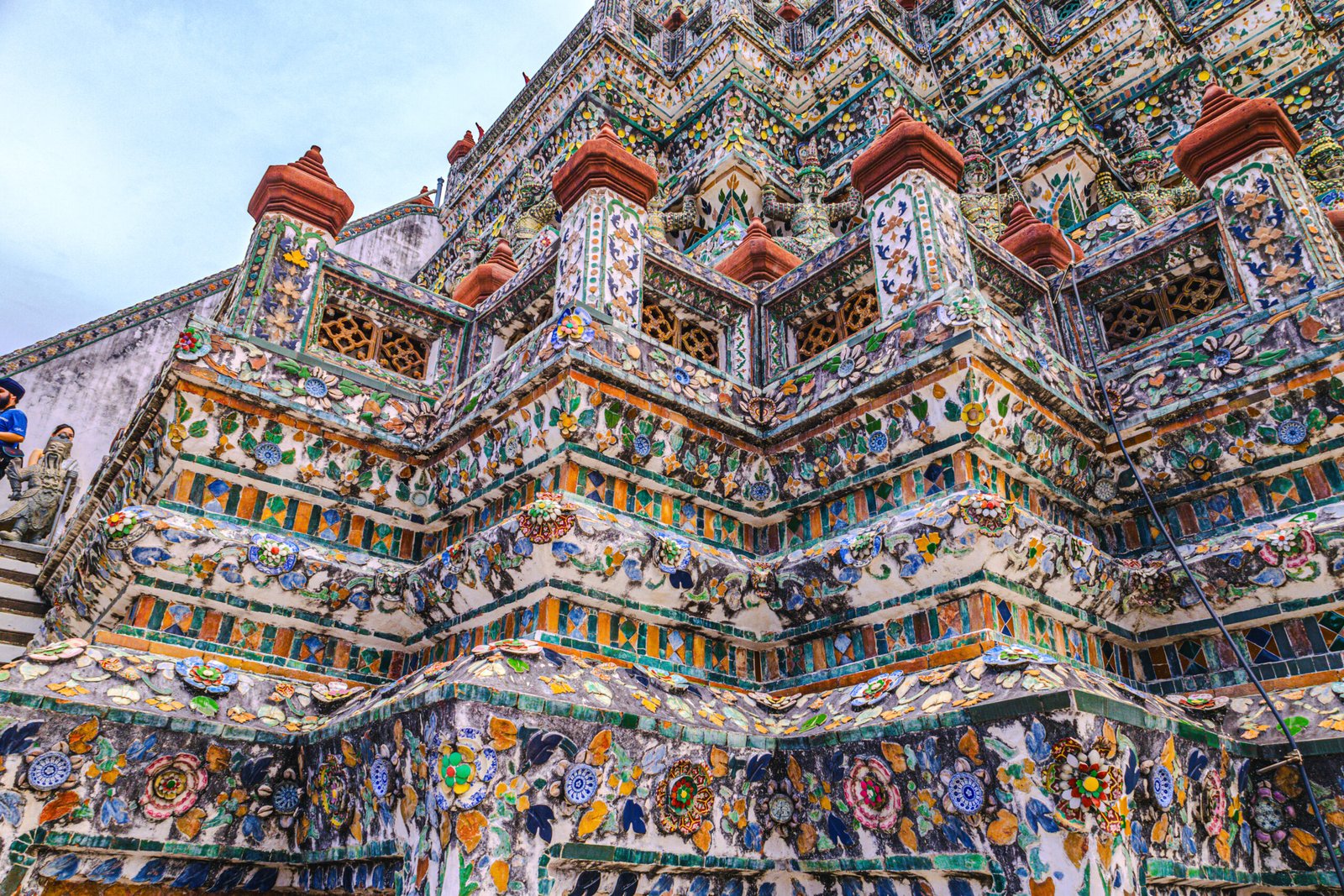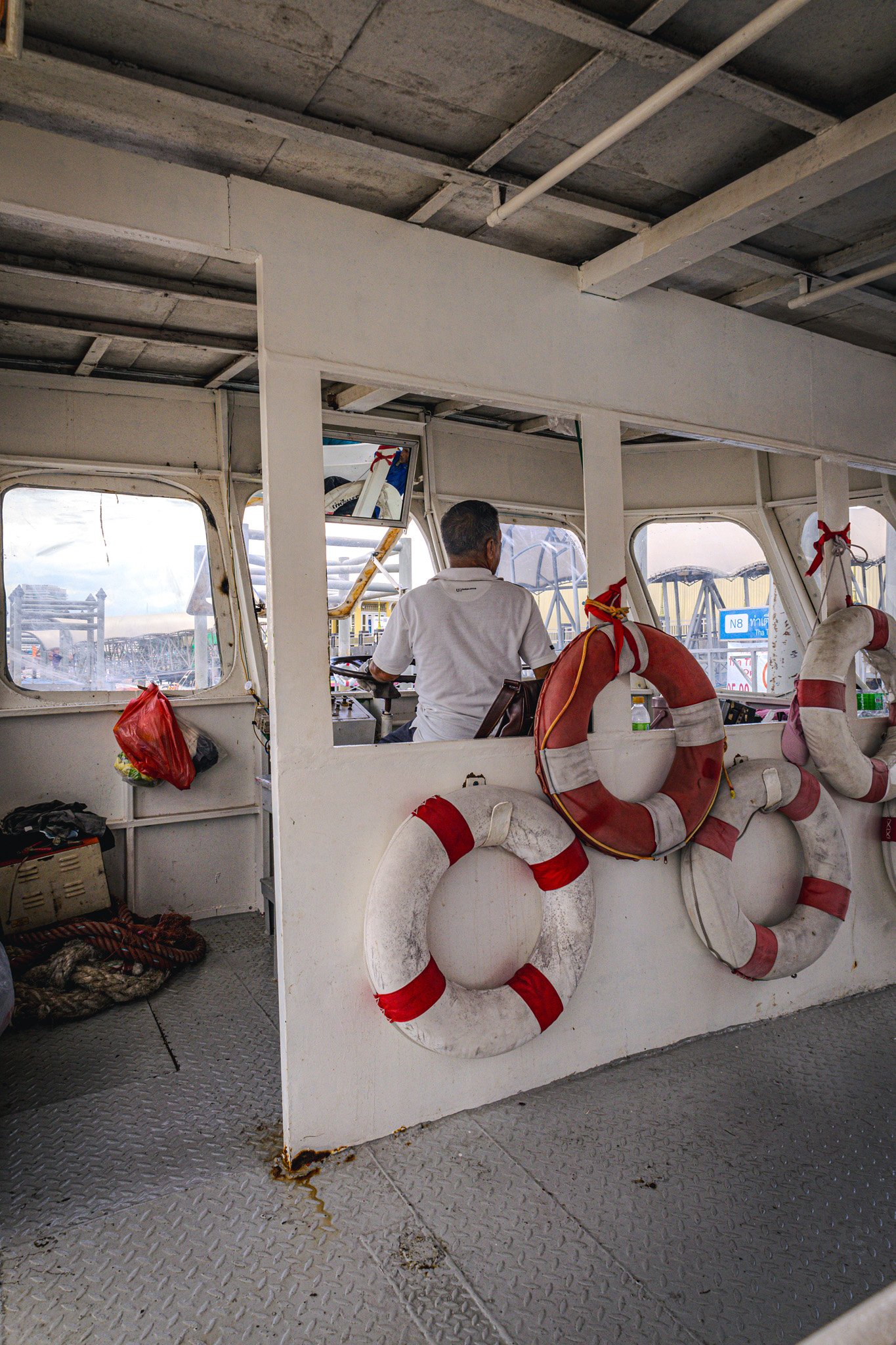WAT ARUN
Wat Arun (วัดอรุณ), also known as the Temple of Dawn, is one of Bangkok’s most iconic and stunning landmarks. Situated on the west bank of the Chao Phraya River, this breathtaking temple is renowned for its towering spires, intricate decorations, and captivating beauty, especially during sunrise and sunset. It is an essential part of Thailand’s rich cultural and religious heritage, drawing visitors from around the world.

Wat Arun’s origins date back to the Ayutthaya period (14th-18th century), when it was initially known as Wat Makok. After the fall of Ayutthaya in 1767, King Taksin chose this location to establish his new capital, Thonburi, and renamed the temple Wat Chaeng.


The temple gained prominence during the reign of King Rama II (1809-1824), who began the construction of the central prang (tower). It was further developed under King Rama III (1824-1851), who completed the prang and added the temple’s most distinctive features. Finally, King Rama IV renamed it “Wat Arun Ratchawararam,” commonly shortened to Wat Arun.
Wat Arun is named after Aruna, the Hindu god of dawn, symbolizing the rising sun and the cycle of life. It is an important symbol of enlightenment in Buddhist tradition, representing the journey from darkness to light. The temple is a place of worship and meditation for many Thai Buddhists, and it plays a significant role in various religious festivals and ceremonies.
The most striking feature of Wat Arun is its central prang, which stands at approximately 70 to 80 meters (230 to 260 feet) high, making it one of the tallest religious structures in Thailand. The prang represents Mount Meru, the center of the universe in Hindu and Buddhist cosmology.
The entire structure is decorated with intricate designs made from thousands of pieces of colorful Chinese porcelain, seashells, and glass, which shimmer in the sunlight. These delicate, hand-placed pieces form floral patterns and ornate details, giving the temple an exquisite, glittering appearance.
Surrounding the central prang are four smaller prangs, symbolizing the wind god Phra Phai. Each of these towers is also adorned with intricate porcelain and glass mosaics. The base of the central prang features statues of mythical creatures, such as kinnaree (half-bird, half-human figures) and yaksha (giant demon guardians), adding to the temple’s mystical atmosphere.
As Wat Arun is a sacred site, visitors are required to dress modestly. Make sure to cover your shoulders, arms, and knees. Sarongs are available for rent at the entrance if needed.
Renting traditional Thai clothing at Wat Arun is a delightful experience that also enhances the visit to this iconic temple. Many visitors opt to rent traditional Thai attire, such as the elegant “chut thai,” which often includes a beautiful silk dress for women and a “sampot” or “chong kraben” for men. This allows them to immerse themselves in Thai culture and history while exploring the temple grounds. Several rental shops near Wat Arun offer a variety of outfits, often including accessories like sashes, shawls, and even jewelry to complete the look. Visitors commonly also hire a professional photographer to take stunning photos, usually included in a package.
Wat Arun is often referred to as the “Temple of Dawn” because of its breathtaking beauty when illuminated by the first light of day. It’s equally stunning at sunset, when the temple’s porcelain mosaics reflect the golden hues of the setting sun, creating a magical glow.
The temple is also spectacular at night when it’s illuminated, casting a soft light over the Chao Phraya River. You can admire the view from across the river, particularly from the nearby Tha Tien Pier or one of the riverside restaurants. To avoid the crowds and heat, visit Wat Arun early in the morning or late in the afternoon. This timing also allows you to enjoy the best lighting for photography.
You can climb partway up the central prang using steep, narrow stairs, which offer a breathtaking view of the Chao Phraya River and the Bangkok skyline. However, the climb can be challenging, so be cautious.
The image of Wat Arun is featured on the 10-baht coin, a testament to its cultural and historical significance in Thailand. The temple has inspired various art forms, from traditional Thai murals to contemporary works, and is often depicted in paintings, films, and travel literature.
Wat Arun is more than just a temple; it’s a masterpiece of Thai architecture and a symbol of Bangkok’s cultural identity. Its shimmering beauty, rich history, and riverside location make it one of the most awe-inspiring sites in Thailand. Whether you’re interested in history, architecture, or simply want to witness one of the most beautiful temples in the world, Wat Arun is a must-visit destination that offers a glimpse into the heart of Thai spirituality and artistry.
WAT ARUN
Monday – 08:00-18:00
Tuesday – 08:00-18:00
Wednesday – 08:00-18:00
Thursday – 08:00-18:00
Friday – 08:00-18:00
Saturday – 08:00-18:00
Sunday – 08:00-18:00
Admission: 100 Thai baht for foreigners, free for Thai nationals
FERRY TO WAT PHO


The ferry ride takes only about 3-5 minutes. It is a short, scenic journey that offers beautiful views of both Wat Arun and the surrounding riverside. The ferry operates frequently throughout the day, typically running every 10 to 15 minutes.
Upon reaching the opposite side of the river, you’ll arrive at Tha Tien Pier, located just a short walk from Wat Pho, home of the famous Reclining Buddha. From the pier, follow the signs or ask locals for directions—it’s only a few minutes’ stroll to the temple entrance.
Try to grab a seat on the edge of the ferry for better views of the river and the temples as you cross. The sight of Wat Arun’s majestic spires from the water is particularly breathtaking.
Since Wat Pho and Wat Arun are so close, many visitors plan to visit both temples in one day. Starting at Wat Pho, then crossing to Wat Arun via ferry, or vice versa, is a popular route.
